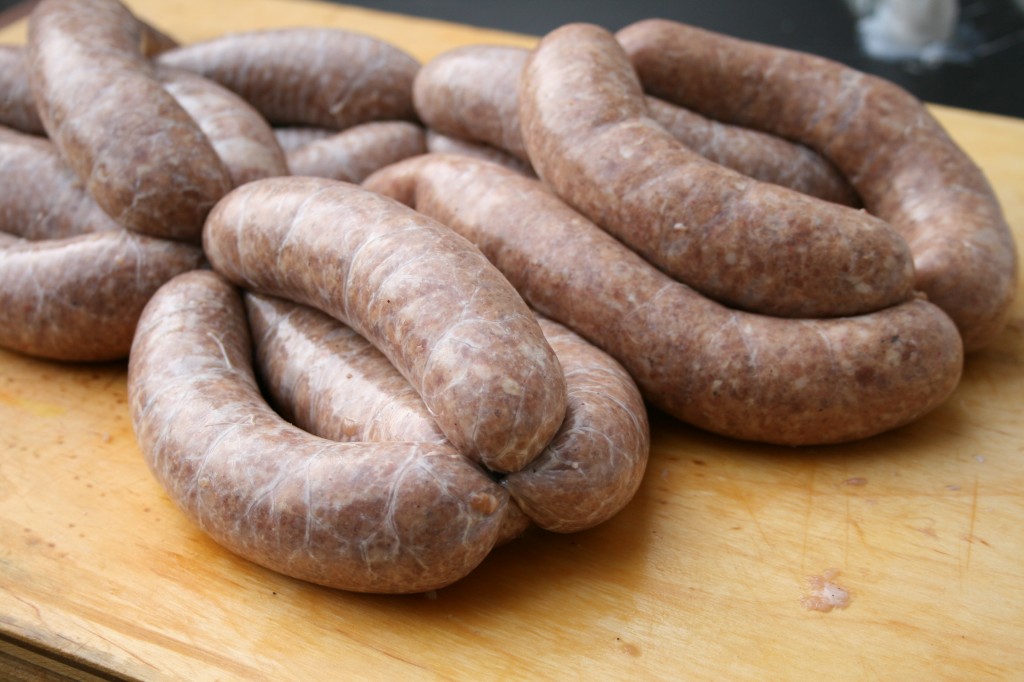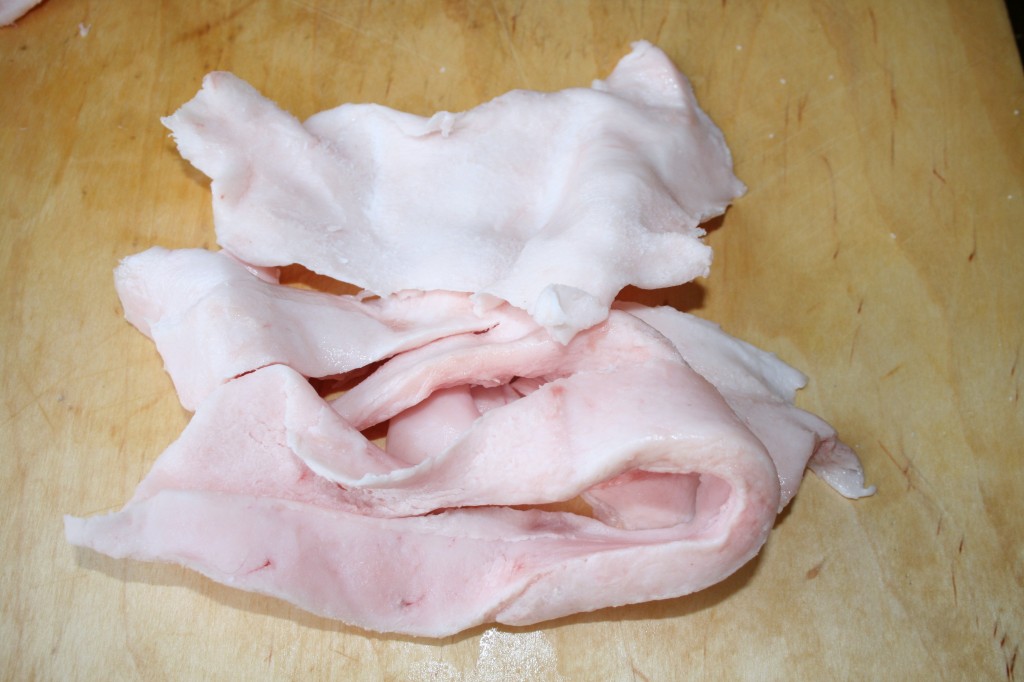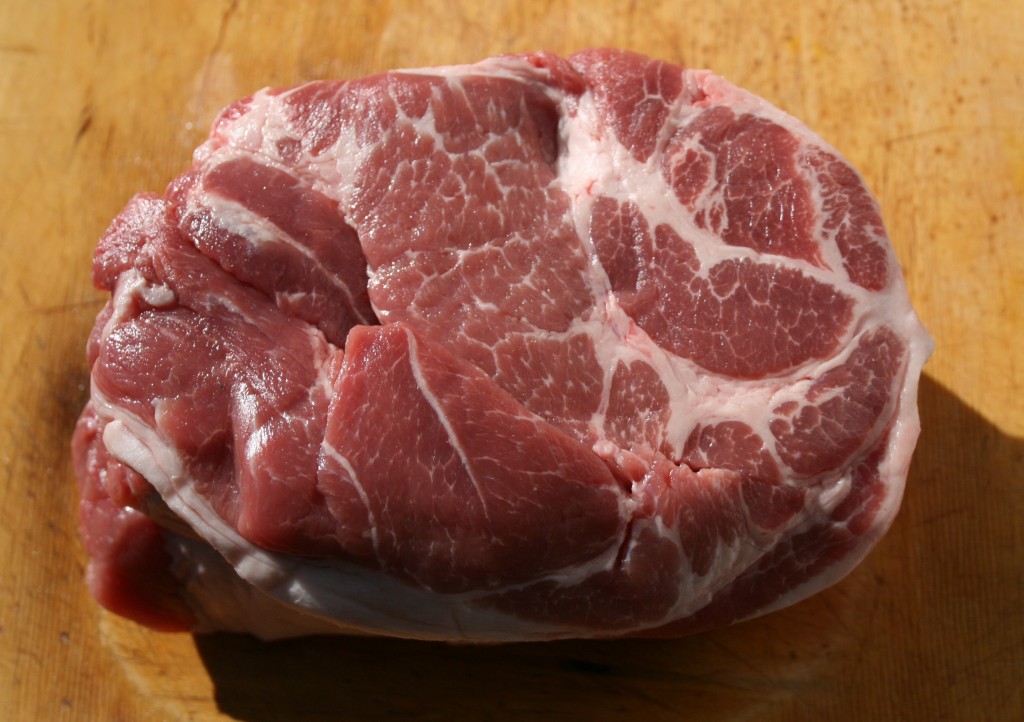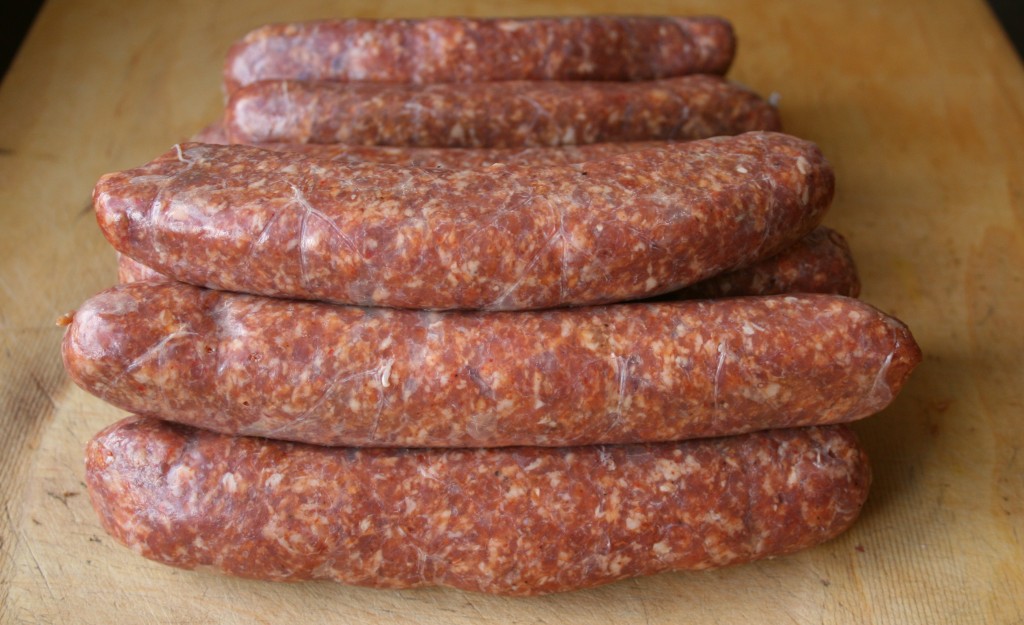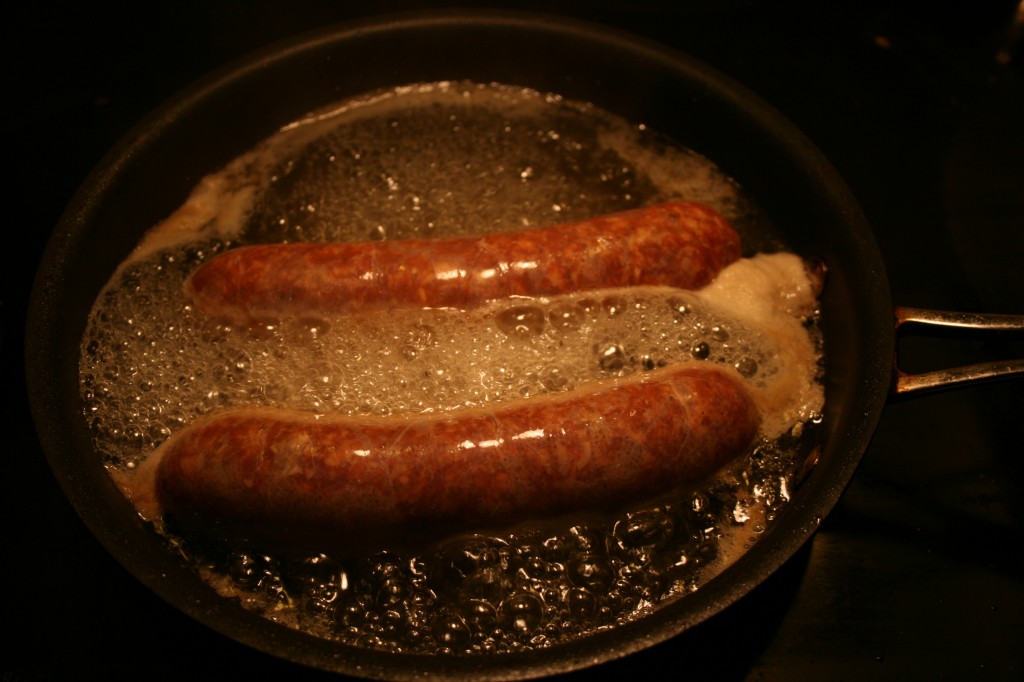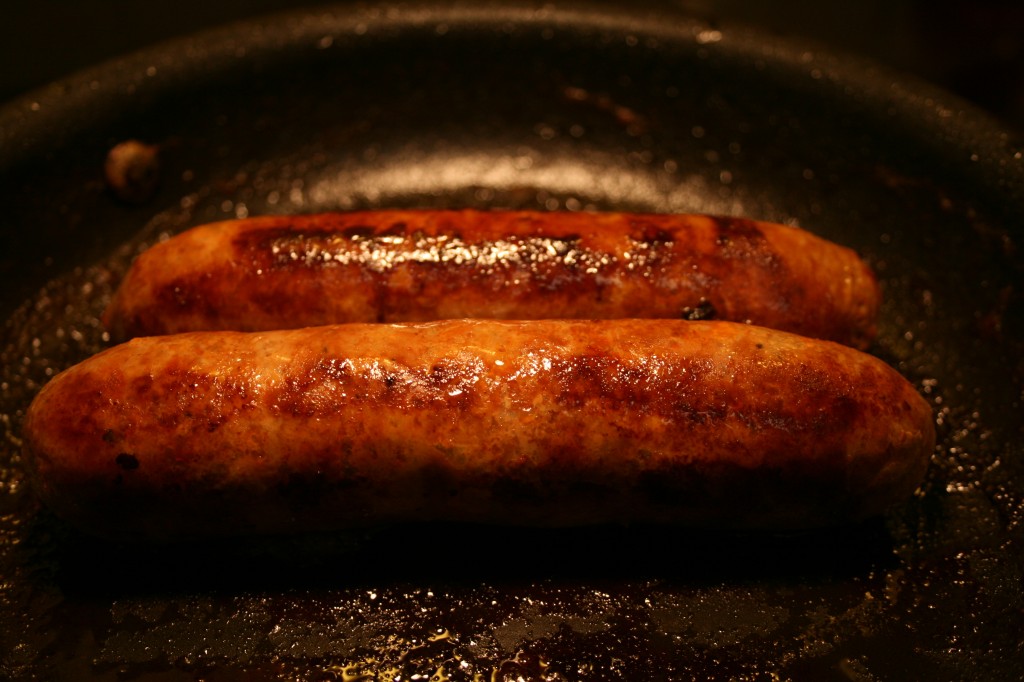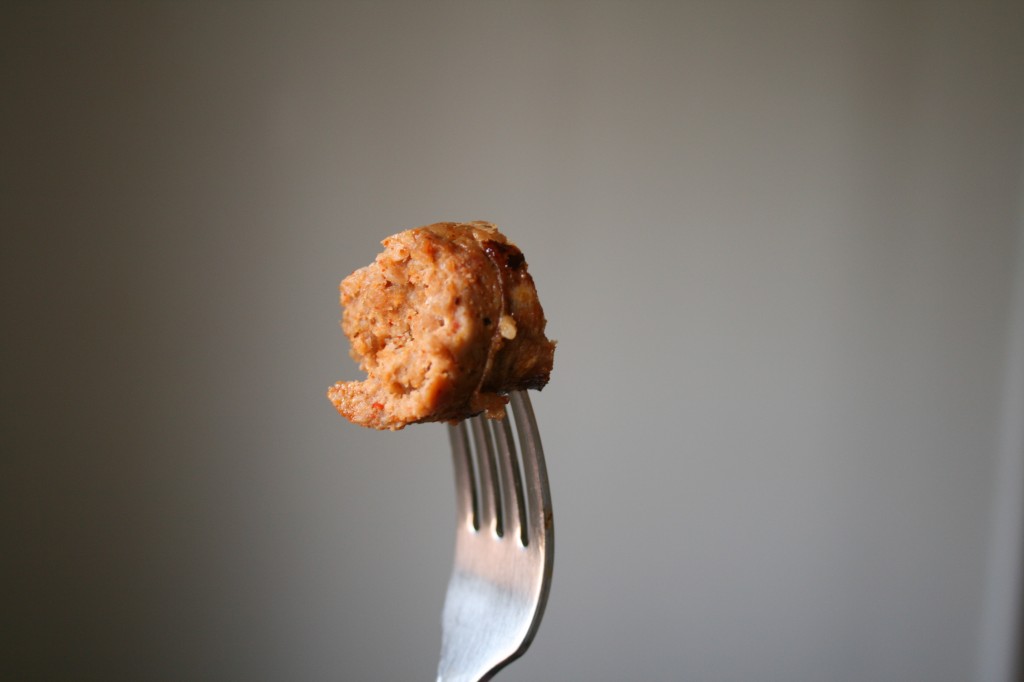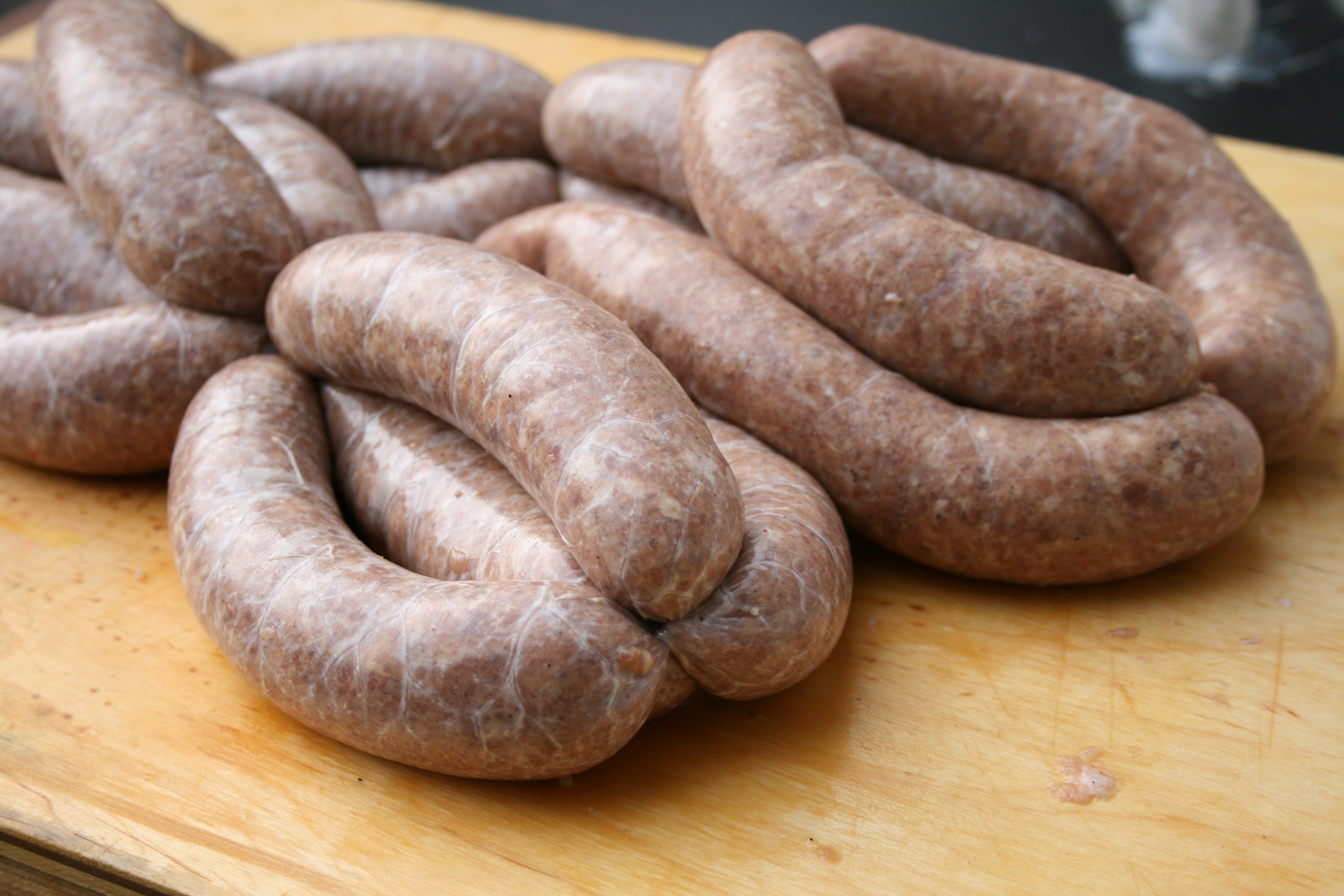
Homemade Fresh Sausage 101
Knowing how to make your own sausage is a great skill for any home cook. I’m going to show you the basic technique of making fresh sausage. Once you understand the simple procedures and seasoning ratios, you’re free to get creative. You can follow recipes for tried and true sausages like Mexican Chorizo, Italian sausage, and Bratwurst, or you can customize sausages with seasonings you like and name them after yourself.
Sausage making originated as the outcome of efficient butchery; a way to take parts of the animal that may not seem appealing, but are perfectly nutritious and edible, and turn them into a refined culinary staple. By utilizing underappreciated cuts of meat, the sausage is a tribute to frugality and the animals that gave their lives. Most commercial brand sausages are made from butcher’s scraps, and while there is nothing wrong with that, most of these sausages come from factory-farmed animals, contain MSG, and often include cheap, non-meat additives that make the sausages bulkier, without the use of actual meat. These additives are are called ‘fillers’ and/ or ‘extenders’ and include ingredients like cereal flours, wheat gluten, potato starch, and corn syrup, just to name a few. Sure, none of these ingredients are poison, but they also aren’t sausage.
There are high quality commercial sausages out there, I’m not suggesting they are all crap, but…well, I’m just gonna say it: Most commercial brand sausages are crap. Making your own sausage offers you the opportunity to decide which fresh meats and spices to use, without the use of mystery ingredients. Don’t forget about bragging rights either; next time you have your friends over for a bar-b-que, you can casually mention that you made the sausages. “You made these?!” they’ll say, surprised and slightly jealous over your scrumptious offerings and savvy culinary expertise. It feels good, trust me.
Fresh sausage is meat that is ground with spices, can either be stuffed into casings or used as a loose sausage (such as breakfast patties or the crumbled Italian sausage on a pizza), and can be cooked several ways. To make fresh sausage you will need these tools:
1. Kitchen scale- This is the most accurate way to measure your spices, and also to make sure you are using the correct amount of meat.
2. Meat grinder- These are available online and at specialty stores. A kitchenaid mixer with the meat grinder and sausage stuffer attachments is also a good choice.
3. Sausage stuffer- Most grinders come with sausage stuffing attachments. These are ok to use, but if you plan on making sausage often or in large amounts, it’s a good idea to invest in a tabletop sausage stuffer.
4. Instant-read thermometer- To make sure your ground meat stays below 40°F when mixing, and also to ensure you are cooking your sausages to the proper temperatures.
Sausage can be made from any species of animal, but typically pork reigns supreme. This is due to the flavor and quality of the fat; pork fat is hard, white, and has the the most appealing taste. Fat is a very important component of proper sausage making. Fat is responsible for producing a juicy, flavorful sausage. The minimal amount of fat to use when making sausage is about 20%; any less than that and you’re likely to end up with a dry, crumbly, flavorless mess that is not worthy of being called sausage. There are low-fat sausages on the market that don’t fit the description above, but making really lean sausage palatable is usually achieved through an excessive use of binders and fillers. Most sausage recipes call for the amount of fat to be about 25%-30%, but can sometimes be up to 50%. While 25%-30% is all you really need, adding more fat to sausage is rarely a bad idea. Experiment and find the ratios you like. The most common type of fat that is added to sausage is fatback.
Fatback is the layer of fat that is taken from the, you guessed it, back of the pig; this is the thickest and purest white fat from the pig. You may be able to purchase fatback from your local butcher, or you can order it online. It is common to add fatback to sausages made from very lean meats such as venison or elk.
The ideal cut of meat for making pork sausages is the pork shoulder butt (it is called the ‘shoulder butt’ because it is the butt of the shoulder…get it?), also known as the boston butt. The pork shoulder butt contains the ideal meat to fat ratios for sausage making (25%-30%), and is inexpensive. Most of the time this piece of meat is all you need to produce a juicy sausage. Many sausage recipes call for the addition of beef or veal, and the same cut of meat is typically used, the shoulder (also goes by the name of chuck). Poultry sausages are very common as well. If making a chicken or turkey sausage you will want to use boneless skinless thigh meat (and have some of that fatback handy, poultry thigh meat only has about 10%-15% fat).
Other ingredients used in making sausage include:
Kosher salt: This is a necessary ingredient for sausage making. Kosher salt is not treated with iodine (like table salt) so it has a flavor that many describe as more ‘pure’ than table salt. Different brands of salt have different densities so it is important to measure the salt by weight rather than by volume (such as measuring spoons).
The master ratio of kosher salt in a sausage recipes is: 10 grams (1/3 ounce) of kosher salt per 1 pound of meat.
You can of course add more or less to taste, but start with this ratio and adjust accordingly.
Seasonings: The seasonings used in fresh sausage range from fresh or dried herbs, cooked or raw diced vegetables, and dried or fresh fruit. Feel free to get creative and personalize sausages to your individual taste.
Pink salt: This curing salt is only necessary if you intend to smoke your fresh sausage. If your sausage is to go directly into the refrigerator or freezer, or you are going to cook it immediately, no curing salts are needed. Pink salt can be ordered online or found at some specialty shops. Most recipes require 6 grams of pink salt per 5 pounds of meat.
Non-fat dried milk powder: This ingredient is also found in sausage recipes that call for the sausage to be smoked. The milk powder helps to bind the meat together and retain the natural juices of the meat. Used in the right proportions, this will not alter the taste of the meat and is very useful in preventing too much loss of moisture. Similar to non-fat milk powder is soy protein concentrate. These ingredients are interchangeable, and most recipes call for 2 1/2-5 ounces per 5 pounds of meat. Non-fat milk powder is available at most grocery stores, and soy protein concentrate can be ordered online.
Casings: There are two categories of casings, Natural and Synthetic. Synthetic casings can be made from collagen, plastic, cellulose, and fibrous materials. Synthetic casings are often used by commercial sausage makers because of their uniform size and weight. They are rarely used for making fresh sausage. Natural casings are the preferred choice for most sausage makers; they can be used for almost any product and they provide that wonderful ‘snap’ when you bite into them. Natural casings are the gastrointestinal tract of hogs, sheep, or cows. The stomach and bladder can also be used for products like blood sausage and mortadella. Cow intestines are much larger and are typically used to make thick sausages like bologna. Sheep intestines are often used for making sausage as well, but are smaller then both cow and hog casings, measuring about 3/4”-1” in diameter. They are popular for breakfast links and small frankfurters.
When making fresh sausage, the most common type of casings to use are from the small intestine of a hog. Hog casings measure about 11/2” in diameter when stuffed. Natural casings are sold by the ‘bundle’ or ‘hank’, which is about 100 yards. You will need two feet of hogs casings per one pound of meat. These can be found at most butcher shops or ordered online.
All natural casings can be packed in salt and stored for up to a year. Before using the casings they need to be soaked in water for at least 30 minutes (up to 2 days is fine, but they must be refrigerated if soaking for longer than several hours) to rehydrate them and remove any odors and salt. Before stuffing your sausage, run cool water through the entire length of the casings to flush out the insides. This helps remove odors and lubricates the casings, making it easier to slide them onto the nozzle of your sausage stuffer.
Ok, now that we have our tools and ingredients, lets get to sausage making!
There are three steps to making sausage, which I have listed below. Most instructions for making sausage will simply tell you to grind the meat, mix in the seasonings, then stuff them into casings. It is really not much more complicated than that, but there are a few minor details left out of those instructions that can make the difference between a dry, crumbly sausage, and a delicious, juicy bite of heaven. I also like to talk a lot (or, in this case, write a lot) so for those who are eager for lots of details and information, you’re in luck.
Step 1: Grinding
Step 2: Mixing
Step 3: Stuffing & linking
Now that all the hard work is done, it’s time to cook these suckers. You’ll want to let the sausage rest overnight in the refrigerator before you cook them. This allows the flavors to set up. This step isn’t critical; I’ve certaintly been guilty of cooking fresh sausage 30 seconds after I’m done linking it, but you can really taste a difference when the sausage is given time to rest.
Cooking sausage can be done several ways. Most recipes will tell you how each sausage is traditionally cooked; bratwurst is commonly boiled in beer and roasted, while sausages such as knackwurst are typically smoked. None of these instructions are set in stone and you’re free to cook any fresh sausage by whichever method you choose. The most important thing to remember when cooking fresh sausage is, if you cook sausage too fast at too high of a temperature, the skin will burn and split open before the inside is fully cooked.
Unless you are following a recipe for a dish that has specific instructions on how to prepare the sausage, I find that parboiling (which means to boil until the item is partially cooked) the sausage then finishing on a grill or in frying pan is great way to gently cook the sausage before browning the skin. In my experience, this yields a delicious, juicy sausage with slightly crispy skin. As with most cooking discussions, it seems that everyone has a way of doing something that works for them, and if it ain’t broke, don’t fix it. The parboiling method for cooking fresh sausage is my personal favorite, but certaintly not the one and only way.
To parboil, place the sausages in a pan with 1-2 tablespoons of oil. Add enough water (beer, wine, and cider are also popular choices) to come 1/4″ – 1/2″ up the sides of the pan. Turn the temperature to medium-high and boil until the water evaporates, rotating the sausages once (use tongs to avoid piercing the skin and letting the juices escape). This should take about 10-15 minutes. Turn the heat to medium and sautee the sausages on each side until the skin takes on an amber color. You can grill them after the parboiling stage by placing the sausages on the grill over light flames until the amber color is achieved. Use a meat thermometer to check that the inside of the sausage is 154°F-160°F.
If you opt to skip the parboiling step and put the sausages directly on the grill, you’ll want to place them over medium, indirect heat for about 15 minutes, and finish them over some light flames to give the skin some crispiness and color. If the sausages are going directly in a frying pan, heat the pan over low-medium heat, add some oil or butter, then add the sausages. The sausages should sautee for about 10-15 minutes; you want the skin to brown slowly while the insides have a chance to fully cook. It’s very tempting to cook sausages too fast, but cooking them slowly yields the best results.
Fresh sausages will keep 3-5 days refrigerated, and can also be frozen for several months.
If you have a favorite way to cook sausages, please share! I’m always interested in learning new cooking tips and tricks.
That’s all folks. I’ll be sharing recipes for sausages that I make, and hope you will too!
